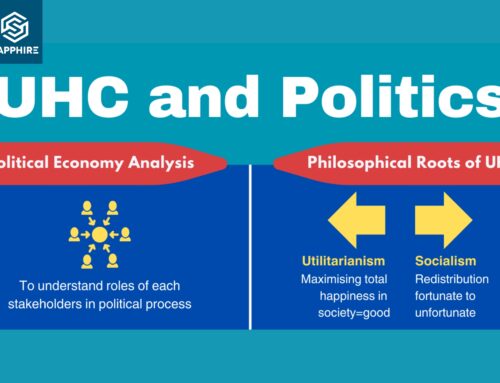
Research institutions such as the Health Intervention and Technology Assessment Program (HITAP) and the Mahidol-Oxford Tropical Medicine Research Unit (MORU) were tasked early on in the COVID-19 pandemic to inform policy decisions, particularly through the use of mathematical models. The arrival of COVID-19 vaccines in late 2020 bolstered the options available to policymakers to respond to the pandemic. Given the limited supply of vaccines expected in Thailand in 2021, it is essential to make best use of the vaccines received. To do so requires prioritisation of certain sub-populations for vaccination, and the most appropriate sub-population may depend on what the specific goals are of the vaccination strategy. If the target is to limit COVID-19 deaths, it is likely that vaccinating the most vulnerable populations (the elderly and those with certain comorbidities including hypertension, diabetes, lung disease, chronic kidney disease, etc.) is the most effective strategy. If the goal is to reduce the incidence of COVID-19 and allow the easing of as many restrictions as possible, then it is possible that vaccinating high contact groups (depending on the context, this may be groups such as younger populations or migrant/frontline workers) may be the most effective strategy. Mathematical epidemiological models have been essential to compare and contrast the impact of different vaccination strategies.
Given the uncertainty about some vaccine characteristics already available (e.g. the impact of vaccination on the ability to block the virus transmission or the duration of immunity granted) and vaccines that will become available over the next year, it is important to conduct analyses which explore a range of scenarios based on vaccine characteristics. Conducting a broad range of plausible scenario analyses in this way will allow for rapid comparison of model results as new information becomes available.
Another key question is whether the arrival of vaccines would allow policymakers to alleviate or remove some of the other policy measures in place to prevent the spread of COVID-19. Given the far-reaching and pervasive impact of certain COVID-19 prevention measures, the economic cost of these measures can be huge, particularly in tourism-dependent countries such as Thailand which have had closed borders or strict hotel quarantine requirements. To better understand the advantages and disadvantages of different combinations of policy measures and vaccination strategies, an economic evaluation is being conducted. It is essential that any economic evaluation for COVID-19 interventions considers the societal costs beyond the healthcare sector to be useful for informing policy decisions.
HITAP and MORU have been working together on both the epidemiological and economic evaluation projects in Thailand. If you would like to learn more about either of these projects please contact Chris Painter ([email protected]) or Nantasit Luangasanatip ([email protected]).



